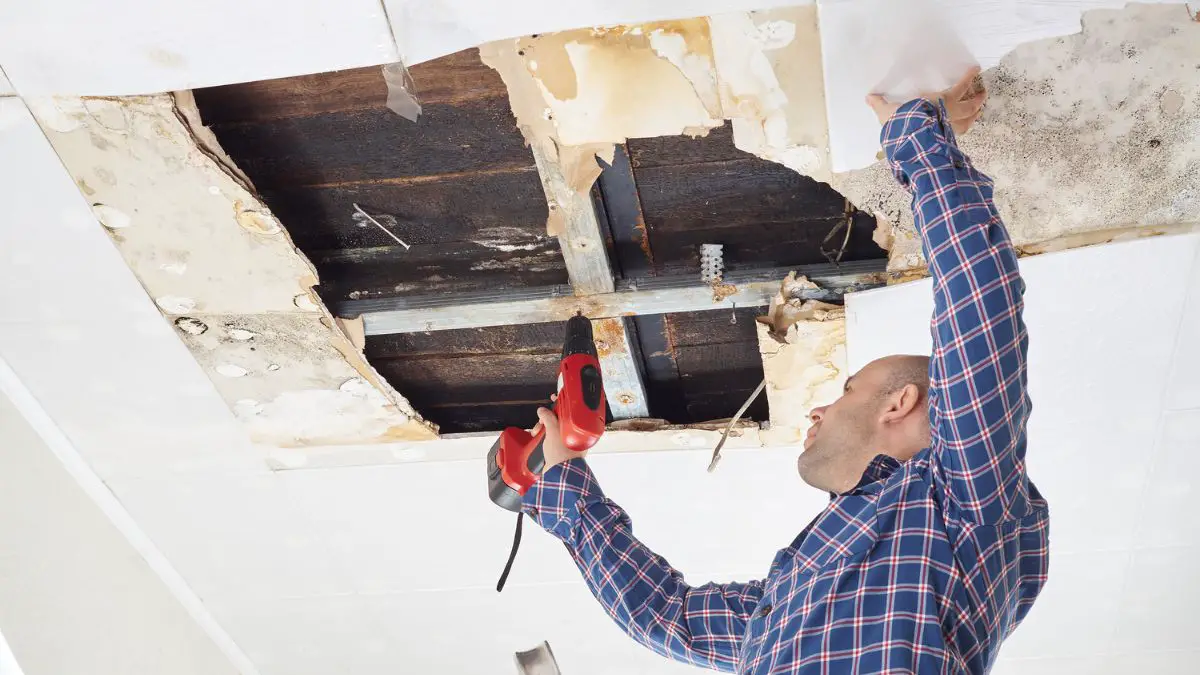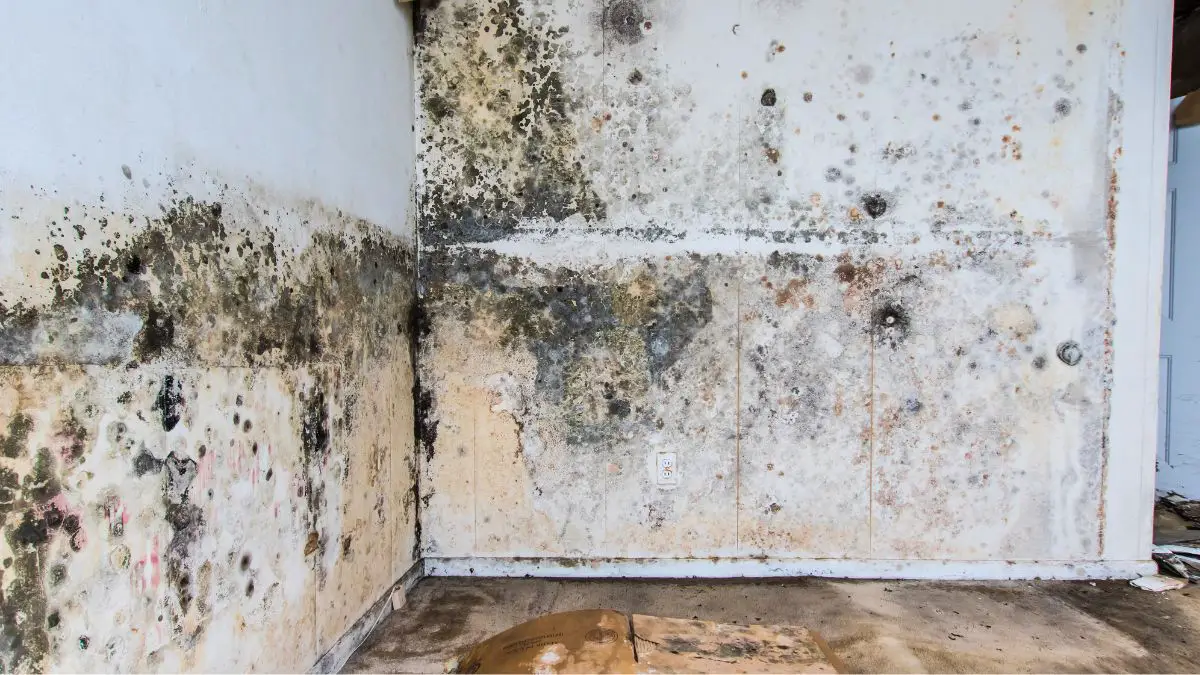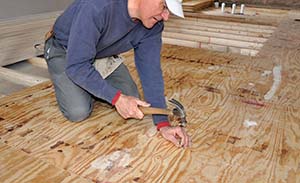Water damage is repairable. Prompt action to stop the source of the water intrusion is crucial to minimize further damage and increase the likelihood of a successful repair.
Understanding the importance of water damage repair is the first step in protecting your home. It’s not just about fixing a problem; it’s about safeguarding your investment, health, and future.

Understanding Water Damage
Water damage refers to various potential losses caused by contact with water, which enables the rotting of wood, mold growth, steel rusting, de-laminating plywood, and many others.
Water damage can sneak up on you, stemming from a burst pipe, a leaky roof, a flooded basement, or even a natural disaster like a flood. Each cause brings unique challenges and requires specific solutions for effective liquid damage repair.
Types of Water
Not all water damage is created equal. Three distinct types of water can cause damage:
- Clean Water: Water that doesn’t pose an immediate health threat. It’s typically from a clean source, like a leaking faucet or a broken water line. Despite its harmless nature, clean water can escalate and cause significant damage if not addressed promptly.
- Grey Water: Water that’s slightly contaminated, either because of the source’s nature or neglect. Examples are dishwasher overflow, washing machine overflow, or toilet overflow with urine but no feces. Grey water causes more damage and can become black water if left untreated.
- Black Water: This is the most dangerous type of water damage. Black water is highly contaminated and can cause severe illness or death if ingested. It typically stems from sewage damage, flooding from rivers or streams, toilet overflow with feces, and stagnant liquid that has begun to support bacterial growth.
Understanding the type of water damage you’re dealing with is crucial. It determines the necessary steps for water extraction, cleanup, and restoration and ensures you take the proper precautions to protect your health during the water damage repair process.
Is Water Damage Repairable?
You’re probably wondering, “Is water damage repairable?” The answer is yes, but with a caveat. The repairability of water damage depends on several factors. Let’s break them down:
- Extent of the Damage: The severity of the water damage plays a significant role in determining whether it is repairable or not. Minor issues like a slow leak under a sink can often be fixed easily. However, extensive damage, like a flooded basement, may require more intensive water damage restoration.
- Duration: The length of time the water has been present affects repairability. Left untreated for a long time, water damage leads to structural issues and mold growth, making the repair process more complex.
- Source of Water: As discussed earlier, the type of water (clean, grey, or black) influences the repair process. Black water is on another level of water damage, being the most severe and the most challenging to repair.
- Affected Materials: Some materials are more resistant to water damage than others. Non-porous materials like metal and plastic are often easier to repair than porous materials like wood and drywall.
Tip: While water damage is often repairable, the key lies in swift, effective action. Time is of the essence when dealing with water damage. The quicker you can start the water extraction and drying process, the better your chances of minimizing damage.
The Process of Water Damage Repair
The water damage repair process is a series of steps designed to restore your home to its pre-damage condition. Let’s walk through each step together:
Step 1: Initial Assessment and Inspection
Understand the extent of the damage. A professional water damage restoration service will conduct an initial assessment and inspection. They’ll identify the source of the water, categorize the water (clean, grey, or black), and assess the extent of the damage.
When accompanying a home inspector during water damage assessment and repair, homeowners should prioritize their safety.
Wear an N-95 respirator, make sure it fits properfly, to reduce inhalation of mold spores (in case there’s mold problems). Use long gloves and wear goggles without ventilation holes to protect the eyes from exposure to mold.
Internationa Association of Certified Home Inspectors, nachi.org
Step 2: Water Removal and Extraction
Once the assessment is complete, the next step is water removal and extraction. You remove standing water from your home using submersible pumps and wet vacuums. The goal is to remove as much excess water as possible to prevent further damage and reduce drying time.
Related reading: How To Remove Water From A Flooded Crawl Space
Step 3: Drying and Dehumidification
After removing the water, it’s time for drying and dehumidification. Professionals use industrial-grade dehumidifiers and air movers to speed up drying and prevent mold and mildew growth.
According to the International Association of Certified Home Inspectors, water-damaged items or sections in your homes must be dried within 24 to 48 hours to ensure mold will not grow.
Step 4: Cleaning and Sanitizing
Cleaning and sanitizing ensures your home is clean and safe. Clean and sanitize all restorable items and structures damaged by the water. Use special treatments to counteract any odors.
Step 5: Restoration and Repair
The restoration and repair process either involves minor repairs, such as replacing drywall and installing new carpet, or major repairs, like reconstructing entire rooms. The goal is to bring your home back to its pre-damage condition.
The Cost of Water Damage Repair
Let’s talk about a crucial aspect of water damage repair – the cost. The cost estimate for water damage repair can vary widely, depending on several factors:
Factors Influencing the Cost
- Extent of the Damage: Severe damage requires more extensive repair work, which increases the cost.
- Size of the Affected Area: The larger the area affected by water damage, the higher the repair cost.
- Type of Water: The type of water involved (clean, grey, or black) influences the cost, with black water damage being the most expensive to clean up due to the additional safety measures required.
- Location: The location of the damage also affects the cost, especially damage in hard-to-reach areas.
- Local Rates: The cost of labor and materials in your area influences the cost of water damage repair.
The Cost of Ignoring Water Damage
You might be tempted to ignore minor water damage to save money. But here’s the hard truth: Ignoring water damage can be far more costly in the long run.
Untreated water damage leads to structural issues, mold growth, and other serious, expensive problems. Ignoring water damage sometimes outweighs the cost of prompt and effective repair.
Here’s a summary table of the range of costs for water damage restoration.
| Aspect | Cost Range |
|---|---|
| Water Damage Restoration | $450 – $14,000 |
| Cost per Square Foot | $3.75 – $7 |
| Mold Removal | $2,200 |
The cost per square foot for water damage repair ranges from $3.75 for clean water damage to $7 for black water damage. Mold remediation and removal cost an average of $2,200, depending on the surface, material, and water or moisture levels. Fungal growth can begin within 24 to 48 hours, potentially costing hundreds of dollars.
Preventing Water Damage
Prevention is always better than cure, and with a few proactive steps, you can significantly reduce the risk of severe water damage in your home. Let’s explore some key strategies:
Regular Maintenance and Inspection
The best way to prevent water damage is through regular maintenance and inspection. Look for discoloration on walls or ceilings (also called water stains), a musty smell, or increased humidity. Regularly inspect your basement, attic, and bathroom.
Proper Drainage
Ensure your home’s exterior has good drainage to prevent water from pooling around your foundation, which can lead to leaks and structural damage. Sloping your landscape away from your home and installing or maintaining a sump pump for your basement prevent water damage.
Roof and Gutter Maintenance
Regularly inspect your roof for missing or worn shingles. Keep your gutters clean and debris-free to ensure they can effectively direct water away from your home.
Plumbing Checks
Regularly inspect your pipes for leaks or any changes in water pressure and unexplained increases in your water bill, as these are signs of a hidden leak.
Related reading: 8 Alternatives to Gutters: How to Collect & Direct Water From Your Home
Insurance and Water Damage
Navigating the world of insurance can be tricky when dealing with water damage. But don’t worry. We’re here to help. Let’s explain what you need to know about insurance and water damage.
Understanding Your Coverage
It’s important to understand what your insurance policy covers. Not all water damage is covered by standard homeowners insurance.
Generally, sudden and accidental damage is covered, like water damage from a burst pipe or a leaking water heater. However, damage from neglect or lack of maintenance is typically not concealed.
Moreover, most standard policies do not cover flood damage. For that, you would need separate flood insurance. It’s crucial to review your policy or speak with your insurance agent to understand the specifics of your coverage.
Making an Insurance Claim
If you’ve suffered water damage that’s covered by your insurance, you’ll need to make a claim. Here’s a general outline of the process:
- Contact Your Insurance Company: Notify your insurance company about the damage immediately.
- Document the Damage: Take photos or videos before any repairs are made. This will serve as evidence when you file your claim.
- Fill Out Claim Forms: Your insurance company will provide claim forms. Fill these out promptly and accurately.
- Adjuster Inspection: An insurance adjuster will inspect your home to assess the damage.
- Claim Resolution: After the inspection, your insurance company will determine how much they will cover for the repairs.
Every insurance company has its own process for filing claims. Communicate with your insurance company and understand what steps you need to take.
Related reading: 10 Water Damage Insurance Claim Tips You Should Follow
Frequently Asked Questions
Can water damage be fixed?
Yes, water damage can often be fixed when addressed promptly. The process involves water removal, drying, dehumidifying, cleaning and sanitizing, and restoration and repair.
Does water damage eventually go away?
No, water damage does not eventually go away on its own. If left untreated, water damage leads to structural instability and mold growth.
How long does it take to repair water damage?
Minor water damage takes a few days to resolve, while more extensive damage takes weeks to repair fully.
Is water damage always visible?
Not always. Water can seep into hidden areas, causing damage out of sight.
Can water damage cause health problems?
If not addressed promptly, water damage can lead to mold growth, which causes health issues for people with allergies or respiratory conditions. Black water damage is hazardous to health due to the contaminants present.
How do you fix permanent water damage?
The feasibility of fixing permanent damage depends on the specific situation and extent of the damage. It is advisable to consult with water damage restoration specialists, contractors, or structural engineers who can provide expert advice on the best course of action.




